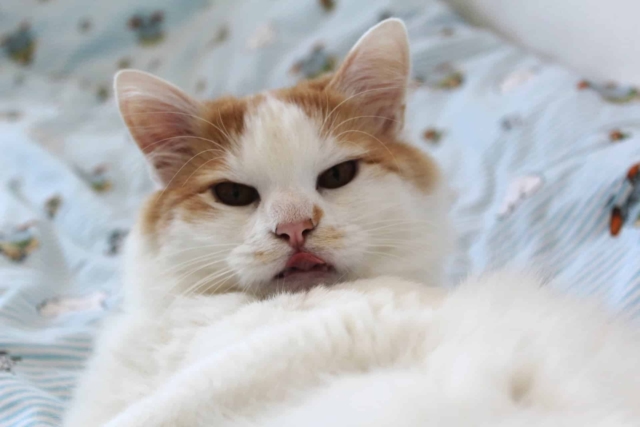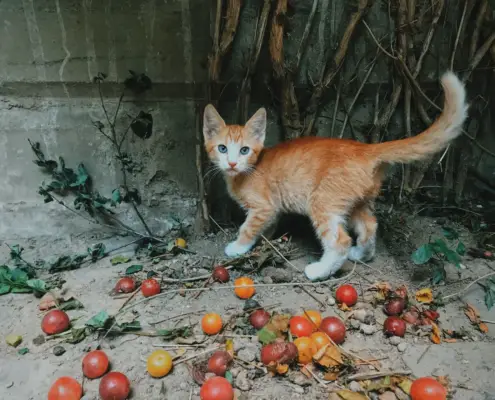
Post-Traumatic Stress Disorder (PTSD) is a psychological condition that affects humans who have experienced traumatic events. But what about animals? Can they experience PTSD as well? In recent years, there has been a growing awareness of the fact that animals can suffer from PTSD just like humans. In this article, we will explore whether cats can experience PTSD and how to identify and treat the condition.
Understanding PTSD in animals
PTSD is a mental health condition that can develop in response to a traumatic event. The symptoms of PTSD can be physical, emotional, and psychological. Common symptoms include anxiety, depression, flashbacks, nightmares, and irritability. In humans, PTSD is often associated with exposure to violence, war, natural disasters, or sexual assault. However, animals can also experience traumatic events that can trigger PTSD.
Can cats experience PTSD?
Yes, cats can experience PTSD. In fact, research has shown that cats can develop PTSD-like symptoms after experiencing traumatic events such as car accidents, natural disasters, abuse, and attacks by other animals. Cats that have been through traumatic experiences may show signs of anxiety, fear, and avoidance behavior. These symptoms can have a significant impact on their quality of life and their relationship with their owners.
Signs and symptoms of PTSD in cats
The signs and symptoms of PTSD in cats may vary depending on the severity of the trauma and the individual cat’s personality. Some common signs of PTSD in cats include:
Avoidance behavior
Cats with PTSD may avoid certain places or situations that remind them of the traumatic event. For example, they may avoid going outside if they were attacked by another animal in the past.
Hyper-vigilance
Cats with PTSD may be hyper-vigilant and constantly on edge. They may be easily startled by sudden noises or movements and may spend a lot of time scanning their environment for potential threats.
Aggression
Cats with PTSD may become aggressive towards other animals or humans. This can be a result of fear or anxiety and may be directed towards people or animals that they perceive as a threat.
Changes in eating and sleeping habits
Cats with PTSD may experience changes in their eating and sleeping habits. They may lose their appetite or become more lethargic than usual.
Causes of PTSD in cats
The causes of PTSD in cats are similar to those in humans. Traumatic events such as car accidents, natural disasters, abuse, and attacks by other animals can all trigger PTSD in cats. Cats that have been rescued from hoarding situations or have been through multiple homes may also be at risk of developing PTSD.
Common triggers for PTSD in cats
Some common triggers for PTSD in cats include:
Loud noises
Loud noises such as thunderstorms, fireworks, or construction work can be traumatic for cats and may trigger PTSD.
Car rides
Cats that have been in car accidents or have been abandoned on the side of the road may associate car rides with trauma and may develop PTSD as a result.
Other animals
Cats that have been attacked or bullied by other animals may develop PTSD and may exhibit avoidance or aggression behavior towards other animals.
Treating PTSD in cats
Treating PTSD in cats can be challenging, but it is possible with the right approach. Some common treatments for PTSD in cats include:
Medication
Medication such as anti-anxiety medication or antidepressants may be prescribed to help manage the symptoms of PTSD in cats.
Behavioral therapy
Behavioral therapy such as desensitization and counter-conditioning may be used to help cats overcome their fear and anxiety.
Environmental enrichment
Providing a safe and supportive environment for cats can help reduce their stress and anxiety. This may include providing hiding places, scratching posts, and toys.
Creating a safe and supportive environment for cats with PTSD
Creating a safe and supportive environment for cats with PTSD is essential for their recovery. Here are some tips for creating a safe and supportive environment for cats with PTSD:
Provide a safe space
Create a safe space for your cat where they can feel secure and protected. This may include providing a cozy bed, a hiding place, or a room where they can retreat to when they feel overwhelmed.
Avoid triggers
Try to avoid triggers that may cause your cat to become anxious or fearful. This may include loud noises, other animals, or certain situations that remind them of the traumatic event.
Provide environmental enrichment
Providing environmental enrichment such as toys, scratching posts, and climbing structures can help reduce your cat’s stress and anxiety.
Coping strategies for cat owners
Coping with a cat with PTSD can be challenging, but there are some coping strategies that can help. Here are some coping strategies for cat owners:
Be patient
Recovery from PTSD takes time. Be patient with your cat and allow them to progress at their own pace.
Seek support
Seek support from friends, family, or a support group. Talking to others who have gone through similar experiences can be helpful.
Take care of yourself
Caring for a cat with PTSD can be stressful. Make sure to take care of yourself by getting enough sleep, eating well, and engaging in activities that you enjoy.
Seeking professional help for cats with PTSD
If your cat is showing signs of PTSD, it is important to seek professional help. A veterinarian or animal behaviorist can help diagnose the condition and develop a treatment plan that is tailored to your cat’s individual needs.
Conclusion
In conclusion, cats can experience PTSD just like humans. Traumatic events such as car accidents, natural disasters, abuse, and attacks by other animals can all trigger PTSD in cats. The signs and symptoms of PTSD in cats may vary and can have a significant impact on their quality of life. Creating a safe and supportive environment, providing environmental enrichment, and seeking professional help can all help cats recover from PTSD. As cat owners, it is important to be patient, seek support, and take care of ourselves as well as our furry companions.
If you enjoyed my article, I would appreciate you sharing it with your network.

Sima Ndlebe
Sima writes for CatBuzz. He is interested in Cats, Health and Fitness, and Entrepreneurship.
Published: 16 November 2023
Related Articles
Disclaimer
The content found on CatBuzz.org is presented on an "as is" basis and is intended for general consumer information and education purposes only. Any utilization of this information is voluntary and solely at the user's own risk.
None of the articles or content should be regarded as, or used in place of, veterinary medical advice, diagnosis, or treatment. The information provided on the website is purely for educational and informational intentions and should not be considered a substitute for professional guidance from a veterinarian or other qualified expert. The articles are designed to inform consumers about veterinary healthcare and medical matters that may impact their cat's daily life. It should be noted that this website and its services do not constitute the practice of any form of veterinary medical advice, diagnosis, or treatment. CatBuzz.org explicitly disclaims any liability for any direct or indirect damages or losses that may arise from the use of or reliance on the information contained within the content.
Consumers must consult a veterinarian, veterinary specialist, or another qualified veterinary healthcare provider when seeking advice regarding their cat's health or medical conditions. It is important not to ignore, avoid, or postpone seeking medical advice from a veterinarian or other qualified veterinary healthcare provider solely based on information obtained from this website. If you believe that your cat may be experiencing a medical issue or condition, it is imperative to promptly contact a qualified veterinary healthcare professional.




